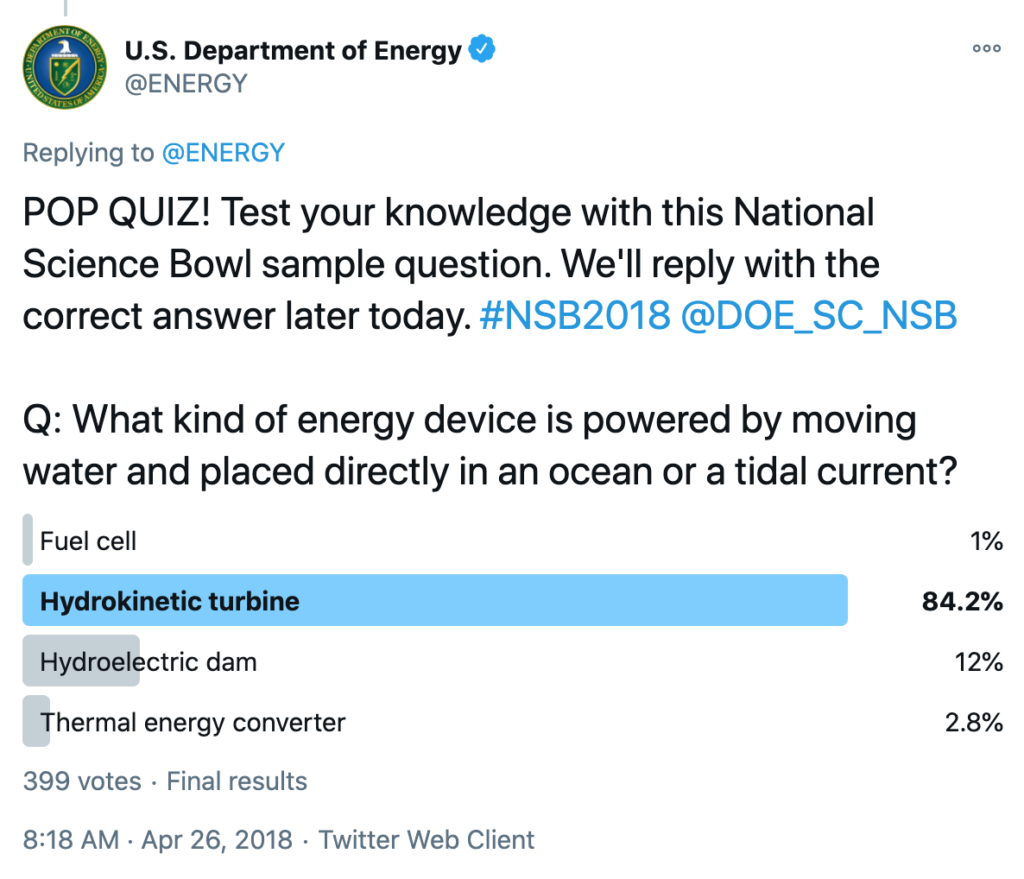The U.S. Department of energy announced this Tuesday a $35 million funding for the development of a new renewable energy technology: Hydrokinetic Turbines (HKT).
Funding will be focused on 11 projects of the Advanced Research Projects Agency-Energy (ARPA-E) and Submarine Hydrokinetic and Riverine Kilo-megawatt Systems (SHARKS) programs.
According to DOE’s report, hydrokinetic energy is an abundant renewable resource that can “boost grid resiliency and reduce infrastructure vulnerability, but it is currently a cost prohibitive option compared to other energy generating sources,” said Lane Genatowski, ARPA-E Director.


The funding will enable SHARKS team to address this barrier by the development of new designs that would reduce HKT costs. New designs would “utilize America’s tidal, riverine, and ocean resources to develop economically attractive energy generation opportunities.”
SHARKS may approach the task with four generation use-cases: remote riverine energy, remote tidal energy, utility scale riverine and utility-scale tidal energy. As DOE explains, projects are encouraged to apply concurrent design methodologies.
Recommended to you: Enel to invest 190 billion euros by 2030 in renewable power capacity
Two hydrokinetic projects
With this approach, projects would decrease the levelized cost of energy of the final turbine design, as well as maintenance and operational costs. Also, generation efficiency would be increased.
As the development of this new technology requires a multi-disciplinary approach, experts in hydrodynamics, structural dynamics, control systems, power electronics, grid connections, and performance optimization will be working alongside SHARKS team.
Two of the funded projects involve the University of Alaska Fairbanks and the Ocean Renewable Power Company.
University’s project is for the creation of a hydrokinetic turbine coupled to a generator by a flexible torsion-cable that allows it to deflect around debris, and thus, reducing remote riverine HKT levelized cost of energy. Doe funded this project with $3,331,361.
Ocean Renewable’s project would introduce a “novel hydrokinetic energy system that identifies dynamic couplings between turbine subsystems and components to optimize system mass and performance.” This project got $3,676,997 of funding.

